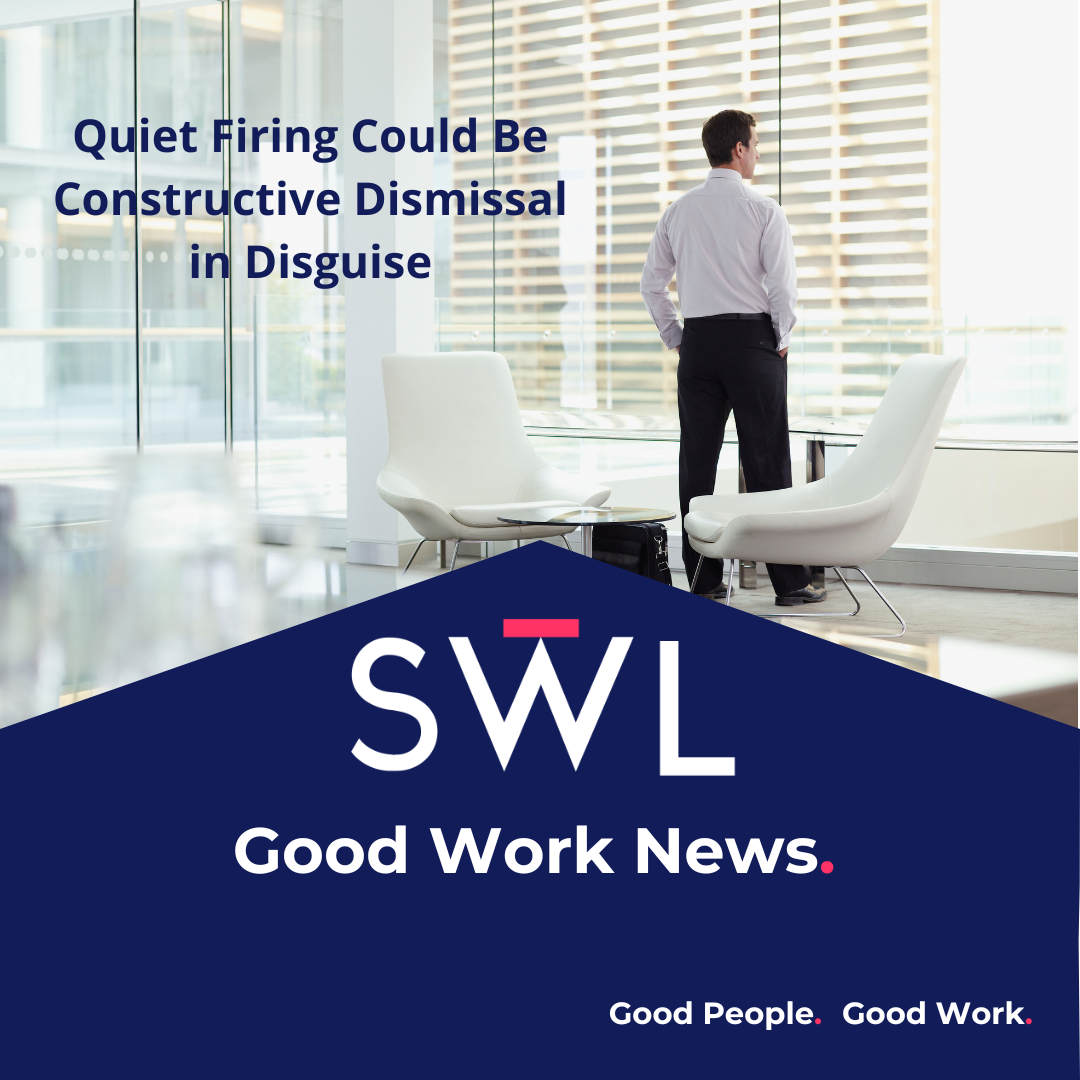By Rebecca Meharchand
With “Quiet Quitting” being all the rage amongst employees these days, some employers have tried to jump on the bandwagon by engaging in what they refer to as “Quiet Firing”.
Quiet quitting (see our blog post) is essentially where employees perform the bare minimum of the tasks required of them and no more. No more staying past 5:00pm to show dedication, no more taking on work that isn’t technically in their job description. Over the past two years during the pandemic, people have had time to think about what matters most to them, how they want to prioritize their time, and whether or not they feel valued in their position.
Quiet quitting is, in that sense, a wake up call to employers to consider how employees are classified, to consider how work is allocated amongst the workforce, and to consider how they’re demonstrating to their employees that they are valued in the workplace.
Quiet firing is how some employers have chosen to respond to the quiet quitting phenomenon. Essentially, quiet firing occurs when managers do things which make an employee feel less valued in the workplace, with the hope the employee will find a new job. This could include not inviting them to certain meetings and initiatives, or by frequently passing over them for promotions and important work. If this sounds familiar, that’s because it is.
Quiet firing, at its core, could be constructive dismissal.
Constructive dismissal occurs when an employer demonstrates an intention to no longer be bound to an employment contract, without actually firing or giving notice to the employee. This can include creating a work environment in which employees are purposefully and consistently excluded from work opportunities without any reason. It can also include creating a work environment where other employees are consistently praised and rewarded for their work, while some employees are not – despite the fact that the quality of work may be similar.This type of employer behaviour could also be seen as a form of workplace bullying through exclusion. The goal of quiet firing is to create an environment that is so unpleasant or demoralising for an employee that they decide to quit on their own, which is why it can lead to constructive dismissal.
While quiet firing may seem like the answer to an employer who is looking to avoid conflict with an unwanted employee, in reality it has the potential to create significant costs for the business.
Even though the employee may be the one to end the employment relationship after they’ve been “quietly fired” (i.e. they quit), the law of constructive dismissal allows them to make a claim for notice of termination pay against the employer. Essentially, the employee who quit can come back and say “the reason why I quit was because you made work so uncomfortable and excluded me from meetings and job opportunities that I felt I had no choice but to quit”, they may be awarded wrongful dismissal damages in the same amounts as if they had been terminated. This could happen in circumstances where an employee is repeatedly undervalued or devalued in comparison to their co-workers, or where an employee is excluded from things that they were previously, or should be, included in.
The practice may seem trendy and au current, but in reality it’s a story we’ve heard before, and we know how it can end. Instead of quiet firing, employers should talk to their employees about any issues in the working relationship and how both parties can improve to make it a good working relationship. Of course, if that’s not an option, or if that ship has long sailed, then it may be time to end the working relationship, but with honesty and candour.
We are here to help you. Please contact your Seabrook Workplace Law lawyer to discuss quiet firing or any other workplace, human resources, accommodation, or performance management issues.






